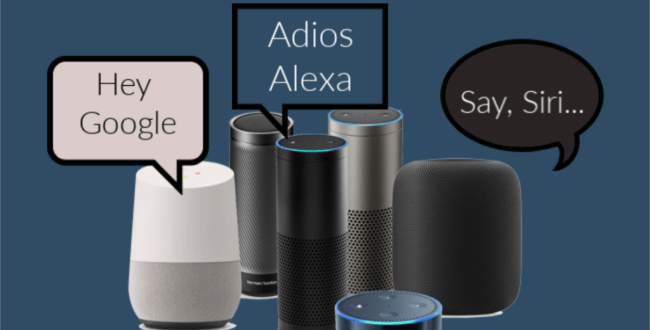
A new NPR/Edison Research report provides valuable insight into the fast-growing US smart speaker market.
The total number of smart speakers in US households grew 78% to 118.5 million devices in December 2018 from December 2017. That means 21% of US consumers aged 18-plus now own a smart speaker.
That’s 53 million people.
Even more impressive, 8% or 14 million US consumers purchased a smart speaker during the 2018 holiday shopping season.
Say what?

48% of these buyers now own one smart speaker while 22% own two speakers and 30% own three or more smart speakers, up 13% from 2017.
Nearly one quarter of smart speaker owners are “likely” to purchase another smart speaker in the next six months, while 7% are “very likely” to add to their collection.for
There’s a whole lot of shakin’ going on in some homes.
“The growth in ownership, particularly the increase in devices per household, really speaks to the tremendous utility of voice assistant technology,” said Tom Webster, Sr VP at Edison Research. “While these devices initially served as audio appliances, they are now becoming integrated into the fabric of everyday life for tens of millions of Americans.”
Edison Trends research shows Amazon Echo dominates the market with 80% of devices, followed by Google Home (14%) and Apple HomePod (6%).
Smart speaker usage up

Actual usage of smart speakers is growing nicely. 29% of smart speaker owners use the device several times a day and 24% use the device “nearly every day.”
Another 18% use the device at least once per week, 8% at least once per month and 5% less than monthly.
A surprising 16% “never” use the device, making for a useful paperweight, but not much more.
Anyone who owns a smart speaker knows it’s a great way to find and listen to music. Like any convenience, the more you use it, the more helpful it becomes in other tasks such as phone calls, weather reports, shopping, getting the latest news headlines and much more.
Of course, you can also do all of these things on your smartphone, so the business use case is still in its early stages.
Can voice payments be far behind?

The growing adoption of smart speakers is good news for payments professionals and marketers though. The NPR report says 77% of consumers are now aware of smart speakers.
Much like the use of smartphones for research, product information, pricing and other useful consumer info, smart speakers quickly provide the same useful function. Once consumers get more comfortable with using smart speakers and device security, product purchase and payments should not be far behind.
As reported by Payments NEXT, Internet of Things (IoT) payments will total an estimated $24.5 billion in 2018 but Juniper Research predicts the IoT payments market will grow at an impressive average of 75% annually over the next 5 years, reaching $410 billion by 2023.

Juniper estimates more than 450 billion transactions will be processed globally by 2023 with more than 80% of these transactions made on smartphones or tablets. That leaves 20% up for grabs by smart speakers and other in-home devices.
Banks are exploring smart speaker payments
US Bank is very interested in P2P payments potential for smart speakers like Amazon Alexa, Google’s Assistant and Apple’s Siri.
“We were third to market with Alexa, we’ve done very advanced and active work on Google Assistant and Siri, we really believe that voice is a key way that customers will interact with the bank in the future,” said Gareth Gaston, executive vice president of omnichannel at US Bank in an interview at American Banker.
USAA, Ally Bank, Capital One and TD Bank also have Alexa Skills and many other financial institutions are exploring the technology and benefits to their customers.

So, stay tuned. While you’re listening to your smart speakers and learning new ways to use them, fintech innovators and some financial institutions are also getting their head into the prospects for smart speakers.
You can view NPR/Edison’s research presentation here.
Visuals courtesy of NPR/Edison Research, Payments NEXT

